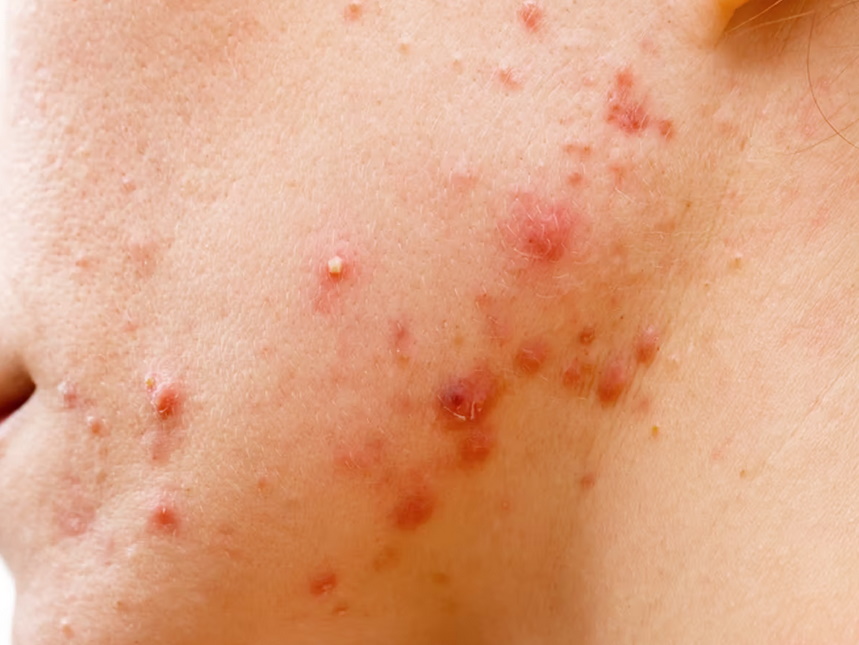Eating Right And Acne Management

Acne happens to almost all of us in the course of our lifetime and is one of the most common skin conditions, affecting 85% of Australians aged 15-24. Many factors contribute to an acne breakout, including sebum and keratin production, acne-causing bacteria, hormones, blocked pores, and inflammation.
In the past, the link between what you eat and drink and acne has been fraught with controversy, but recent studies have shown that diet can play a significant role in acne development. While you should seek out acne treatment from dermatologists or telehealth providers in Australia, complementing your treatment by avoiding foods that can promote acne-causing reactions is highly beneficial.
What Is Acne?
Just what exactly is acne? Acne is not a cosmetic condition, but a chronic inflammatory disease, and can be anything from clogged pores called ‘comedones’, which can be open (blackheads) or closed (whiteheads), papules (small red bumps on the skin) and pustules (like papules but filled with pus), to very large, painful, inflamed and swollen nodules and cysts (‘blind pimples’). Redness, pain, and post-inflammatory hyperpigmentation and scarring are also common with acne. It can appear on the chest and back (and sometimes upper arms) as a result of these areas having many sebaceous glands.
Acne sufferers produce excess oil (sebum) and the skin cells lining their pores don’t shed properly, instead collecting in the pore itself. The skin cells and oil mix together along the length of the pore, creating a microscopic blockage called a microcomedone.
Acne bacteria (Cutibacterium acnes) feed on sebum, multiplying in large numbers around the oily plug, which signals to the body that it should start producing chemicals that result in inflammation.
The inflamed plug gradually enlarges to form a visible comedone. In some instances, the comedone can burst, resulting in the bacteria and pus leaking out onto the surrounding tissue, creating even more inflammation, and causing other acne lesions like papules, pustules, nodules, and cysts.
Acne Treatment
There are many over-the-counter (OTC) cleansers and treatments aimed at unclogging pores (salicylic acid, glycolic acid) and killing bacteria (benzoyl peroxide, which also has a pore unclogging effect). These often don’t fully clear breakouts. This is because they don’t target all the factors that cause cystic acne – oil, sticky skin cells, bacteria and inflammation.
That’s where the Brisbane-based Qr8 MediSkin comes in, their doctors can customise the best acne treatment product for you – one that targets all the acne-causing pathways to help you manage acne (and post-inflammatory hyperpigmentation at the same time). Clinically formulated treatments can be found through telehealth providers, whose doctors conduct a video consultation with their patients and directly deliver your treatment to your door.
These are often paired with azelaic acid or salicylic acid to kill bacteria and get rid of excess dead skin cells, benzoyl peroxide to reduce the quantity of bacteria on the skin, and retinoids (adapalene, tretinoin, and tazarotene among others), vitamin A derivatives that help chemically remove dead skin cells.
Foods To Avoid If You Have Acne
Refined Grains and Sugars
If you suffer from acne you might notice that you often eat a large quantity of refined carbohydrates when compared to people with little to no acne.
Sugary foods directly affect the levels of blood insulin and insulin-like growth factor-1, according to a paper in the journal Clinics in Dermatology. These trigger the production of the hormone androgen, which leads to an increase in oil production. As we know, having an excess of sebum production can cause acne.
Avoid the following foods that are rich in refined carbohydrates such as:
- Bread, crackers, cereal or desserts made using white flour
- Pasta made from white flour
- White rice and rice noodles
- Sodas and other sugary beverages
- Cane sugar, maple syrup, honey or agave
A study found that people who frequently consumed added sugars had a 30% greater risk of developing acne, while those who regularly ate pastries and cakes had a 20% greater risk.
On the other hand, low-glycaemic diets, which do not dramatically raise blood sugars or insulin levels, are associated with reduced acne severity.
Dairy Products
Many studies have discovered a link between milk products and acne severity in teenagers. Milk is known to increase insulin levels, independent of its effects on blood sugar, which may make acne worse. Cow’s milk also contains amino acids that stimulate the liver to produce more IGF-1, which has been linked to the development of acne.
Fast Food
Acne is often associated with eating a diet high in calories, fat, and refined carbohydrates. More often than not, these processed foods exacerbate inflammation in the body and destabilise blood sugar levels.
Foods To Help Prevent And Manage Acne
Foods with omega-3 fatty acids
This includes salmon, flax seeds, and walnuts. Foods with omega-3 fatty acids have been known to give skin an inner glow. They help reduce inflammation, so blemishes won’t be as red.
Antioxidant filled foods
Antioxidant rich foods like cherries, berries, green tea, and spinach combat free radicals that cause skin damage and breakouts.
Foods rich in selenium
Brazil nuts, almonds, onion, garlic, and whole grains are all sources of selenium, which is a powerful antioxidant. They help preserve the skin’s elasticity and reduce inflammation.
Foods rich in vitamin CMelons, oranges, tomatoes, and strawberries boost the immune system and strengthen cell walls. These foods will help protect your skin from acne scarring and enhance skin healing.
Foods rich in vitamin E
This category includes nuts, soybeans, almonds, leafy greens and eggs which help protect the skin from scarring.
Foods rich in vitamin A
Foods rich in beta-carotene, which enhance the benefits of selenium include carrots, bell peppers, cantaloupes, and sweet potatoes.
Foods high in magnesium
Magnesium helps balance out acne-inducing hormones, add artichokes, oatmeal, brown rice, and figs to help manage hormonal acne.
Low sodium foods
To avoid acne breakouts, limit the amount of processed or prepared foods. Substitute canned or frozen vegetables with fresh ones.



